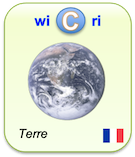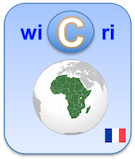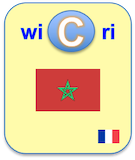Hydrogen effect on the austenite-martensite transformation of the cycled Ni-Ti alloy
Identifieur interne : 000025 ( PascalFrancis/Checkpoint ); précédent : 000024; suivant : 000026Hydrogen effect on the austenite-martensite transformation of the cycled Ni-Ti alloy
Auteurs : Fehmi Gamaoun [Tunisie] ; Imen Skhiri [Tunisie] ; Tarak Bouraoui [Tunisie] ; Tarak Ben Zineb [France]Source :
- Journal of intelligent material systems and structures [ 1045-389X ] ; 2014.
Descripteurs français
- Pascal (Inist)
- Wicri :
- topic : Hydrogène.
English descriptors
- KwdEn :
Abstract
Because of its biocompatibility, superelastic Ni-Ti wire alloys have been successfully used in orthodontic clinics. The susceptibility of Ni-Ti shape memory alloys toward hydrogen embrittlement has been examined with respect to the residual stress after a few number of cycles in air at room temperature. Orthodontic wires have been cycled until having an imposed deformation of 2.1%, 4%, and 7.7% between I and 50 cycles and then have cathodically been charged by hydrogen with a current density of 10 A/m2 for 4 h in a 0.9% NaCl aqueous solution at room temperature. Throughout cycling, a residual strain has been formed and has increased by the number of cycles and the value of the imposed deformation. After hydrogen charging, the critical stress enhances when the number of cycles is great and the value of the imposed deformation is high. In addition, an embrittlement occurs for the specimen submitted to 50 and 30 cycles with an imposed strain of 2.1% and 4%, respectively. Nevertheless, no embrittlement has been detected after 50 cycles until 7.7% of the imposed deformation. The results of this study imply that the embrittlement could be related to the discontinuity in the distribution of defects created by partial superelastic cycling.
Affiliations:
Links toward previous steps (curation, corpus...)
Links to Exploration step
Pascal:14-0194431Le document en format XML
<record><TEI><teiHeader><fileDesc><titleStmt><title xml:lang="en" level="a">Hydrogen effect on the austenite-martensite transformation of the cycled Ni-Ti alloy</title><author><name sortKey="Gamaoun, Fehmi" sort="Gamaoun, Fehmi" uniqKey="Gamaoun F" first="Fehmi" last="Gamaoun">Fehmi Gamaoun</name><affiliation wicri:level="1"><inist:fA14 i1="01"><s1>Laboratory of Mechanics of Sousse, University of Sousse</s1><s2>Sahloul</s2><s3>TUN</s3><sZ>1 aut.</sZ></inist:fA14><country>Tunisie</country><wicri:noRegion>Sahloul</wicri:noRegion></affiliation><affiliation wicri:level="1"><inist:fA14 i1="02"><s1>Departement of Advanced Mechanics, National Engineering School of Sousse, University of Sousse</s1><s2>Sahloul</s2><s3>TUN</s3><sZ>1 aut.</sZ></inist:fA14><country>Tunisie</country><wicri:noRegion>Sahloul</wicri:noRegion></affiliation></author><author><name sortKey="Skhiri, Imen" sort="Skhiri, Imen" uniqKey="Skhiri I" first="Imen" last="Skhiri">Imen Skhiri</name><affiliation wicri:level="1"><inist:fA14 i1="03"><s1>Laboratoire des Systèmes Electromécaniques (LASEM), ENIS</s1><s2>Sfax</s2><s3>TUN</s3><sZ>2 aut.</sZ></inist:fA14><country>Tunisie</country><wicri:noRegion>Sfax</wicri:noRegion></affiliation></author><author><name sortKey="Bouraoui, Tarak" sort="Bouraoui, Tarak" uniqKey="Bouraoui T" first="Tarak" last="Bouraoui">Tarak Bouraoui</name><affiliation wicri:level="1"><inist:fA14 i1="04"><s1>Laboratory of Mechanical Engineering of Monastir, University of Monastir</s1><s2>Monastir</s2><s3>TUN</s3><sZ>3 aut.</sZ></inist:fA14><country>Tunisie</country><wicri:noRegion>Monastir</wicri:noRegion></affiliation><affiliation wicri:level="1"><inist:fA14 i1="05"><s1>Departement of Mechanics, National Engineering School of Monastir (ENIM), University of Monastir</s1><s2>Monastir</s2><s3>TUN</s3><sZ>3 aut.</sZ></inist:fA14><country>Tunisie</country><wicri:noRegion>Monastir</wicri:noRegion></affiliation></author><author><name sortKey="Ben Zineb, Tarak" sort="Ben Zineb, Tarak" uniqKey="Ben Zineb T" first="Tarak" last="Ben Zineb">Tarak Ben Zineb</name><affiliation wicri:level="4"><inist:fA14 i1="06"><s1>Université de Lorraine, 2 rue Jean Lamour</s1><s2>Vandoeuvre-Lés-Nancy, 54500</s2><s3>FRA</s3><sZ>4 aut.</sZ></inist:fA14><country>France</country><placeName><region type="region" nuts="2">Grand Est</region><region type="old region" nuts="2">Lorraine (région)</region></placeName><orgName type="university">Université de Lorraine</orgName></affiliation></author></titleStmt><publicationStmt><idno type="wicri:source">INIST</idno><idno type="inist">14-0194431</idno><date when="2014">2014</date><idno type="stanalyst">PASCAL 14-0194431 INIST</idno><idno type="RBID">Pascal:14-0194431</idno><idno type="wicri:Area/PascalFrancis/Corpus">000020</idno><idno type="wicri:Area/PascalFrancis/Curation">000421</idno><idno type="wicri:Area/PascalFrancis/Checkpoint">000025</idno><idno type="wicri:explorRef" wicri:stream="PascalFrancis" wicri:step="Checkpoint">000025</idno></publicationStmt><sourceDesc><biblStruct><analytic><title xml:lang="en" level="a">Hydrogen effect on the austenite-martensite transformation of the cycled Ni-Ti alloy</title><author><name sortKey="Gamaoun, Fehmi" sort="Gamaoun, Fehmi" uniqKey="Gamaoun F" first="Fehmi" last="Gamaoun">Fehmi Gamaoun</name><affiliation wicri:level="1"><inist:fA14 i1="01"><s1>Laboratory of Mechanics of Sousse, University of Sousse</s1><s2>Sahloul</s2><s3>TUN</s3><sZ>1 aut.</sZ></inist:fA14><country>Tunisie</country><wicri:noRegion>Sahloul</wicri:noRegion></affiliation><affiliation wicri:level="1"><inist:fA14 i1="02"><s1>Departement of Advanced Mechanics, National Engineering School of Sousse, University of Sousse</s1><s2>Sahloul</s2><s3>TUN</s3><sZ>1 aut.</sZ></inist:fA14><country>Tunisie</country><wicri:noRegion>Sahloul</wicri:noRegion></affiliation></author><author><name sortKey="Skhiri, Imen" sort="Skhiri, Imen" uniqKey="Skhiri I" first="Imen" last="Skhiri">Imen Skhiri</name><affiliation wicri:level="1"><inist:fA14 i1="03"><s1>Laboratoire des Systèmes Electromécaniques (LASEM), ENIS</s1><s2>Sfax</s2><s3>TUN</s3><sZ>2 aut.</sZ></inist:fA14><country>Tunisie</country><wicri:noRegion>Sfax</wicri:noRegion></affiliation></author><author><name sortKey="Bouraoui, Tarak" sort="Bouraoui, Tarak" uniqKey="Bouraoui T" first="Tarak" last="Bouraoui">Tarak Bouraoui</name><affiliation wicri:level="1"><inist:fA14 i1="04"><s1>Laboratory of Mechanical Engineering of Monastir, University of Monastir</s1><s2>Monastir</s2><s3>TUN</s3><sZ>3 aut.</sZ></inist:fA14><country>Tunisie</country><wicri:noRegion>Monastir</wicri:noRegion></affiliation><affiliation wicri:level="1"><inist:fA14 i1="05"><s1>Departement of Mechanics, National Engineering School of Monastir (ENIM), University of Monastir</s1><s2>Monastir</s2><s3>TUN</s3><sZ>3 aut.</sZ></inist:fA14><country>Tunisie</country><wicri:noRegion>Monastir</wicri:noRegion></affiliation></author><author><name sortKey="Ben Zineb, Tarak" sort="Ben Zineb, Tarak" uniqKey="Ben Zineb T" first="Tarak" last="Ben Zineb">Tarak Ben Zineb</name><affiliation wicri:level="4"><inist:fA14 i1="06"><s1>Université de Lorraine, 2 rue Jean Lamour</s1><s2>Vandoeuvre-Lés-Nancy, 54500</s2><s3>FRA</s3><sZ>4 aut.</sZ></inist:fA14><country>France</country><placeName><region type="region" nuts="2">Grand Est</region><region type="old region" nuts="2">Lorraine (région)</region></placeName><orgName type="university">Université de Lorraine</orgName></affiliation></author></analytic><series><title level="j" type="main">Journal of intelligent material systems and structures</title><title level="j" type="abbreviated">J. intell. mater. syst. struct.</title><idno type="ISSN">1045-389X</idno><imprint><date when="2014">2014</date></imprint></series></biblStruct></sourceDesc><seriesStmt><title level="j" type="main">Journal of intelligent material systems and structures</title><title level="j" type="abbreviated">J. intell. mater. syst. struct.</title><idno type="ISSN">1045-389X</idno></seriesStmt></fileDesc><profileDesc><textClass><keywords scheme="KwdEn" xml:lang="en"><term>Biocompatibility</term><term>Dentistry</term><term>Hydrogen</term><term>Hydrogen embrittlement</term><term>Nickel base alloys</term><term>Nitinol</term><term>Phase transformations</term><term>Shape memory alloy</term><term>Strains</term><term>Wire</term></keywords><keywords scheme="Pascal" xml:lang="fr"><term>Déformation mécanique</term><term>Hydrogène</term><term>Transformation phase</term><term>Alliage base nickel</term><term>Biocompatibilité</term><term>Nitinol</term><term>Fil métallique</term><term>Dentisterie</term><term>Alliage mémoire forme</term><term>Fragilisation hydrogène</term></keywords><keywords scheme="Wicri" type="topic" xml:lang="fr"><term>Hydrogène</term></keywords></textClass></profileDesc></teiHeader><front><div type="abstract" xml:lang="en">Because of its biocompatibility, superelastic Ni-Ti wire alloys have been successfully used in orthodontic clinics. The susceptibility of Ni-Ti shape memory alloys toward hydrogen embrittlement has been examined with respect to the residual stress after a few number of cycles in air at room temperature. Orthodontic wires have been cycled until having an imposed deformation of 2.1%, 4%, and 7.7% between I and 50 cycles and then have cathodically been charged by hydrogen with a current density of 10 A/m<sup>2</sup> for 4 h in a 0.9% NaCl aqueous solution at room temperature. Throughout cycling, a residual strain has been formed and has increased by the number of cycles and the value of the imposed deformation. After hydrogen charging, the critical stress enhances when the number of cycles is great and the value of the imposed deformation is high. In addition, an embrittlement occurs for the specimen submitted to 50 and 30 cycles with an imposed strain of 2.1% and 4%, respectively. Nevertheless, no embrittlement has been detected after 50 cycles until 7.7% of the imposed deformation. The results of this study imply that the embrittlement could be related to the discontinuity in the distribution of defects created by partial superelastic cycling.</div></front></TEI><inist><standard h6="B"><pA><fA01 i1="01" i2="1"><s0>1045-389X</s0></fA01><fA03 i2="1"><s0>J. intell. mater. syst. struct.</s0></fA03><fA05><s2>25</s2></fA05><fA06><s2>8</s2></fA06><fA08 i1="01" i2="1" l="ENG"><s1>Hydrogen effect on the austenite-martensite transformation of the cycled Ni-Ti alloy</s1></fA08><fA11 i1="01" i2="1"><s1>GAMAOUN (Fehmi)</s1></fA11><fA11 i1="02" i2="1"><s1>SKHIRI (Imen)</s1></fA11><fA11 i1="03" i2="1"><s1>BOURAOUI (Tarak)</s1></fA11><fA11 i1="04" i2="1"><s1>BEN ZINEB (Tarak)</s1></fA11><fA14 i1="01"><s1>Laboratory of Mechanics of Sousse, University of Sousse</s1><s2>Sahloul</s2><s3>TUN</s3><sZ>1 aut.</sZ></fA14><fA14 i1="02"><s1>Departement of Advanced Mechanics, National Engineering School of Sousse, University of Sousse</s1><s2>Sahloul</s2><s3>TUN</s3><sZ>1 aut.</sZ></fA14><fA14 i1="03"><s1>Laboratoire des Systèmes Electromécaniques (LASEM), ENIS</s1><s2>Sfax</s2><s3>TUN</s3><sZ>2 aut.</sZ></fA14><fA14 i1="04"><s1>Laboratory of Mechanical Engineering of Monastir, University of Monastir</s1><s2>Monastir</s2><s3>TUN</s3><sZ>3 aut.</sZ></fA14><fA14 i1="05"><s1>Departement of Mechanics, National Engineering School of Monastir (ENIM), University of Monastir</s1><s2>Monastir</s2><s3>TUN</s3><sZ>3 aut.</sZ></fA14><fA14 i1="06"><s1>Université de Lorraine, 2 rue Jean Lamour</s1><s2>Vandoeuvre-Lés-Nancy, 54500</s2><s3>FRA</s3><sZ>4 aut.</sZ></fA14><fA20><s1>980-988</s1></fA20><fA21><s1>2014</s1></fA21><fA23 i1="01"><s0>ENG</s0></fA23><fA43 i1="01"><s1>INIST</s1><s2>22109</s2><s5>354000507540930050</s5></fA43><fA44><s0>0000</s0><s1>© 2014 INIST-CNRS. All rights reserved.</s1></fA44><fA45><s0>3/4 p.</s0></fA45><fA47 i1="01" i2="1"><s0>14-0194431</s0></fA47><fA60><s1>P</s1></fA60><fA61><s0>A</s0></fA61><fA64 i1="01" i2="1"><s0>Journal of intelligent material systems and structures</s0></fA64><fA66 i1="01"><s0>GBR</s0></fA66><fC01 i1="01" l="ENG"><s0>Because of its biocompatibility, superelastic Ni-Ti wire alloys have been successfully used in orthodontic clinics. The susceptibility of Ni-Ti shape memory alloys toward hydrogen embrittlement has been examined with respect to the residual stress after a few number of cycles in air at room temperature. Orthodontic wires have been cycled until having an imposed deformation of 2.1%, 4%, and 7.7% between I and 50 cycles and then have cathodically been charged by hydrogen with a current density of 10 A/m<sup>2</sup> for 4 h in a 0.9% NaCl aqueous solution at room temperature. Throughout cycling, a residual strain has been formed and has increased by the number of cycles and the value of the imposed deformation. After hydrogen charging, the critical stress enhances when the number of cycles is great and the value of the imposed deformation is high. In addition, an embrittlement occurs for the specimen submitted to 50 and 30 cycles with an imposed strain of 2.1% and 4%, respectively. Nevertheless, no embrittlement has been detected after 50 cycles until 7.7% of the imposed deformation. The results of this study imply that the embrittlement could be related to the discontinuity in the distribution of defects created by partial superelastic cycling.</s0></fC01><fC02 i1="01" i2="3"><s0>001B00G07T</s0></fC02><fC02 i1="02" i2="X"><s0>001B40F30R</s0></fC02><fC03 i1="01" i2="3" l="FRE"><s0>Déformation mécanique</s0><s5>03</s5></fC03><fC03 i1="01" i2="3" l="ENG"><s0>Strains</s0><s5>03</s5></fC03><fC03 i1="02" i2="3" l="FRE"><s0>Hydrogène</s0><s2>NC</s2><s5>61</s5></fC03><fC03 i1="02" i2="3" l="ENG"><s0>Hydrogen</s0><s2>NC</s2><s5>61</s5></fC03><fC03 i1="03" i2="3" l="FRE"><s0>Transformation phase</s0><s5>62</s5></fC03><fC03 i1="03" i2="3" l="ENG"><s0>Phase transformations</s0><s5>62</s5></fC03><fC03 i1="04" i2="3" l="FRE"><s0>Alliage base nickel</s0><s2>NK</s2><s5>63</s5></fC03><fC03 i1="04" i2="3" l="ENG"><s0>Nickel base alloys</s0><s2>NK</s2><s5>63</s5></fC03><fC03 i1="05" i2="X" l="FRE"><s0>Biocompatibilité</s0><s5>64</s5></fC03><fC03 i1="05" i2="X" l="ENG"><s0>Biocompatibility</s0><s5>64</s5></fC03><fC03 i1="05" i2="X" l="SPA"><s0>Biocompatibilidad</s0><s5>64</s5></fC03><fC03 i1="06" i2="3" l="FRE"><s0>Nitinol</s0><s5>65</s5></fC03><fC03 i1="06" i2="3" l="ENG"><s0>Nitinol</s0><s5>65</s5></fC03><fC03 i1="07" i2="X" l="FRE"><s0>Fil métallique</s0><s5>66</s5></fC03><fC03 i1="07" i2="X" l="ENG"><s0>Wire</s0><s5>66</s5></fC03><fC03 i1="07" i2="X" l="SPA"><s0>Hilo metálico</s0><s5>66</s5></fC03><fC03 i1="08" i2="3" l="FRE"><s0>Dentisterie</s0><s5>67</s5></fC03><fC03 i1="08" i2="3" l="ENG"><s0>Dentistry</s0><s5>67</s5></fC03><fC03 i1="09" i2="X" l="FRE"><s0>Alliage mémoire forme</s0><s5>68</s5></fC03><fC03 i1="09" i2="X" l="ENG"><s0>Shape memory alloy</s0><s5>68</s5></fC03><fC03 i1="09" i2="X" l="SPA"><s0>Aleación memoria forma</s0><s5>68</s5></fC03><fC03 i1="10" i2="3" l="FRE"><s0>Fragilisation hydrogène</s0><s5>69</s5></fC03><fC03 i1="10" i2="3" l="ENG"><s0>Hydrogen embrittlement</s0><s5>69</s5></fC03><fN21><s1>244</s1></fN21><fN44 i1="01"><s1>OTO</s1></fN44><fN82><s1>OTO</s1></fN82></pA></standard></inist><affiliations><list><country><li>France</li><li>Tunisie</li></country><region><li>Grand Est</li><li>Lorraine (région)</li></region><orgName><li>Université de Lorraine</li></orgName></list><tree><country name="Tunisie"><noRegion><name sortKey="Gamaoun, Fehmi" sort="Gamaoun, Fehmi" uniqKey="Gamaoun F" first="Fehmi" last="Gamaoun">Fehmi Gamaoun</name></noRegion><name sortKey="Bouraoui, Tarak" sort="Bouraoui, Tarak" uniqKey="Bouraoui T" first="Tarak" last="Bouraoui">Tarak Bouraoui</name><name sortKey="Bouraoui, Tarak" sort="Bouraoui, Tarak" uniqKey="Bouraoui T" first="Tarak" last="Bouraoui">Tarak Bouraoui</name><name sortKey="Gamaoun, Fehmi" sort="Gamaoun, Fehmi" uniqKey="Gamaoun F" first="Fehmi" last="Gamaoun">Fehmi Gamaoun</name><name sortKey="Skhiri, Imen" sort="Skhiri, Imen" uniqKey="Skhiri I" first="Imen" last="Skhiri">Imen Skhiri</name></country><country name="France"><region name="Grand Est"><name sortKey="Ben Zineb, Tarak" sort="Ben Zineb, Tarak" uniqKey="Ben Zineb T" first="Tarak" last="Ben Zineb">Tarak Ben Zineb</name></region></country></tree></affiliations></record>Pour manipuler ce document sous Unix (Dilib)
EXPLOR_STEP=$WICRI_ROOT/Wicri/Terre/explor/NickelMaghrebV1/Data/PascalFrancis/Checkpoint
HfdSelect -h $EXPLOR_STEP/biblio.hfd -nk 000025 | SxmlIndent | more
Ou
HfdSelect -h $EXPLOR_AREA/Data/PascalFrancis/Checkpoint/biblio.hfd -nk 000025 | SxmlIndent | more
Pour mettre un lien sur cette page dans le réseau Wicri
{{Explor lien
|wiki= Wicri/Terre
|area= NickelMaghrebV1
|flux= PascalFrancis
|étape= Checkpoint
|type= RBID
|clé= Pascal:14-0194431
|texte= Hydrogen effect on the austenite-martensite transformation of the cycled Ni-Ti alloy
}}
|
| This area was generated with Dilib version V0.6.27. | |


